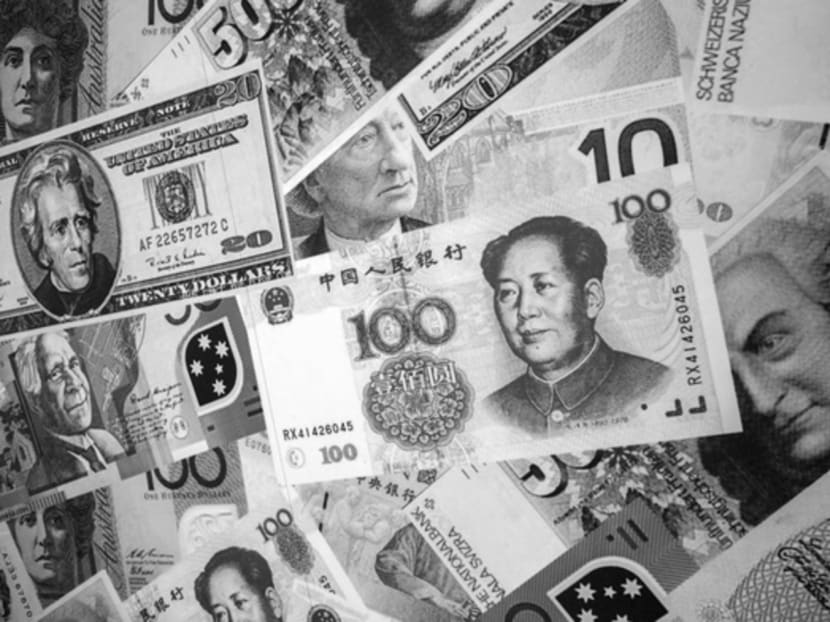A US interest rate hike may not be bad news
The possibility that the Federal Reserve could raise the interest rate for the first time in a decade sent jitters across emerging markets for weeks. Though the Fed has now decided to keep its policy rate unchanged, it also stated that a rate hike is still on the table for this year.

Emerging markets can enhance their resilience by ensuring that exchange rates reflect economic fundamentals. Photo: REUTERS
The possibility that the Federal Reserve could raise the interest rate for the first time in a decade sent jitters across emerging markets for weeks. Though the Fed has now decided to keep its policy rate unchanged, it also stated that a rate hike is still on the table for this year.
The concern is that countries that are dependent on foreign financing could be hit by sudden outflows of international capital, or that currency depreciation following the Fed hike could raise debt-servicing costs for countries and businesses.
Governments in the developing world would be wise to worry less about interest-rate changes in the United States — which, in any case, they cannot control — and think more about policy changes they can make at home to strengthen their economies’ resilience.
An increase in US interest rates is not necessarily bad news for emerging markets. Many developing countries, especially in Asia, are in much better macroeconomic shape than they were just before the Asian financial crisis of the late 1990s or at the onset of the 2008 global financial crisis.
And the Fed is likely to raise rates only if it judges US economic growth to be strong and sustainable, which would be a positive sign for the global economy in general.
Furthermore, a delay in raising rates carries its own dangers, encouraging yield-hungry investors to take larger risks — possibly necessitating a sharper or more abrupt change in interest rates in the future.
Emerging markets should enhance resilience
Emerging markets can enhance their resilience to fluctuations in global interest rates by pursuing sound fiscal and monetary policies, continuing necessary structural reforms and strengthening their financial systems. In particular, research suggests four key policy areas in which governments should consider intervening.
For starters, countries should embrace policies that favour foreign direct investment (FDI) over inflows that can be withdrawn more quickly, such as foreign bank loans, debt or equity investments.
My research with the economist Hui Tong of the International Monetary Fund shows that countries whose capital inflows are mainly in the form of FDI tend to be more resilient to foreign financial shocks. When the global financial crisis erupted, countries with high FDI relative to total capital flows tended to experience a less severe liquidity crunch.
Second, exchange rates need to reflect economic fundamentals. But while theory suggests that flexible exchange rates should blunt foreign monetary or financial shocks, in practice, such a currency regime rarely works on its own.
Indeed, my research with the Asian Development Bank’s Xuehui Han has shown that when the US raises or lowers interest rates, most developing countries tend to follow suit, even if they have a flexible exchange rate.
The key reason is that they want to avoid large swings in the value of their currency. Appreciation can harm competitiveness, while depreciation increases the cost of servicing foreign-currency debt, erodes market confidence and leads to higher inflation.
The notable exceptions to this trend are countries that manage cross-border capital flows, especially the corporate sector’s exposure to foreign-currency debt.
Indeed, certain types of capital-flow management — including limiting domestic debt denominated in foreign currency for both firms and households — have been shown to increase resilience.
Third, domestic macroprudential and microprudential policies increase resilience. These policies should aim at reducing or eliminating the wedge between activities that are good for individuals, banks and firms, and those that benefit society as a whole.
One example of such a policy is to link banks’ mandatory reserve ratios to the speed at which credit is expanding or to the stage of the business cycle. Thus, during periods of expansion, when banks are eager to fund ever more risky borrowers, the reserve ratio rises, curbing potentially disruptive asset bubbles or overinvestment. For those countries capable of designing and implementing prudential regulations, management of cross-border capital flows becomes less useful and less desirable.
Finally, it is no longer appropriate to judge whether a country’s foreign-currency reserves are adequate based on how many months of imports they can cover. Instead, the question to ask is whether the reserves can comfortably service the public and private sectors’ debt denominated in foreign currencies.
The US will normalise its interest rate policy sooner or later according to its need. For other countries, it is important to focus on policies that can strengthen resilience to foreign financial or monetary shocks.
ABOUT THE AUTHOR:
Shang-Jin Wei is chief economist at the Asian Development Bank and the head of its Economic Research and Regional Cooperation Department.






